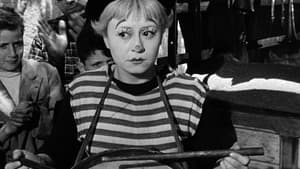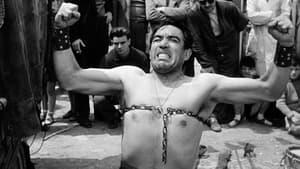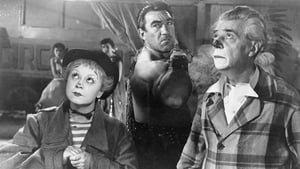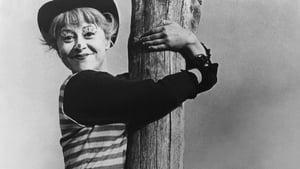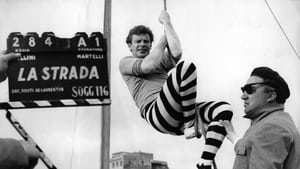Video Sources 0 Views
- Watch trailer
- La Strada 1954 Colorized

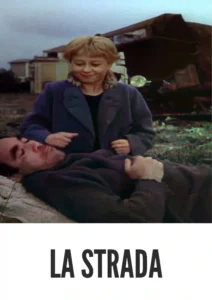
Download La Strada (1954) Colorized HD | Anthony Quinn | Italian Neorealism Drama
Synopsis
Table of Contents
Toggle
Embark on a poignant journey with Federico Fellini’s La Strada, a landmark of Italian neorealism from 1954, now stunningly colorized to reveal the raw beauty and emotional depth of its characters and landscapes. This film, a profound exploration of love, loss, and redemption, follows the lives of two traveling performers and their struggles on the road. Perfect for cinephiles and those who appreciate deeply human stories, this HD download offers a fresh perspective on a timeless classic.
La Strada tells the story of Gelsomina (Giulietta Masina), a simple-minded young woman sold by her impoverished mother to Zampanò (Anthony Quinn), a brutish strongman traveling the Italian countryside. Zampanò earns a meager living performing feats of strength, and Gelsomina becomes his reluctant assistant, enduring his harsh treatment and the loneliness of their nomadic existence.
As they travel, they encounter a charismatic and sensitive clown known as “The Fool” (Richard Basehart), who befriends Gelsomina and offers her kindness and understanding. The Fool’s presence challenges Zampanò’s dominance and awakens a sense of hope and longing in Gelsomina. However, the clash between Zampanò’s violence and The Fool’s gentle spirit leads to tragedy, forever altering the course of Gelsomina’s life. La Strada is a deeply moving and unforgettable film about the human need for connection and the enduring power of the human spirit.
The film boasts unforgettable performances from its lead actors, who bring these complex characters to life:
-
Anthony Quinn as Zampanò
-
Giulietta Masina as Gelsomina
-
Richard Basehart as The Fool
-
Aldo Silvani as Il Giraffa
La Strada transcends simple categorization, blending elements of Italian neorealism, drama, and social commentary. Its poetic storytelling and emotional depth make it a truly unique and enduring work of art.
Released in 1954, La Strada is a cornerstone of Italian neorealism, a cinematic movement that sought to portray the lives of ordinary people with honesty and realism. Federico Fellini, one of the movement’s leading figures, infused La Strada with his distinctive blend of realism and poetic imagination, creating a film that is both deeply rooted in the social realities of post-war Italy and profoundly universal in its themes. La Strada marked a turning point in Fellini’s career, establishing him as one of the most important filmmakers of his generation. The film won the Academy Award for Best Foreign Language Film in 1957, bringing international acclaim to Fellini and Italian cinema.
This colorized version of La Strada has been meticulously crafted, enhancing the visual impact of Fellini’s masterpiece while respecting its original artistic vision. The colorization process involved a detailed analysis of the film’s visual elements, including set design, costumes, and lighting, to ensure that the colors accurately reflect the film’s tone and atmosphere. Advanced digital techniques were used to add color to the grayscale images, bringing new life to the characters and landscapes. This colorized version offers a fresh way to experience La Strada, making it accessible to new audiences while preserving its artistic integrity. Whether you’re a longtime fan or a newcomer to Fellini’s work, this colorized version is sure to captivate and move you.
-
: Federico Fellini
-
: Federico Fellini, Tullio Pinelli, Ennio Flaiano
-
: Carlo Martelli
-
: Leo Catozzo
-
: Ponti-De Laurentiis
-
: Paramount Pictures
-
: 108 minutes
-
: MP4
-
: HD (1080p)
-
: Compatible with most devices, including smartphones, tablets, computers, and smart TVs.
La Strada is widely regarded as one of the greatest films of all time, praised for its powerful storytelling, unforgettable characters, and profound exploration of the human condition. The film has been honored with numerous awards and accolades, including the Academy Award for Best Foreign Language Film. Its influence can be seen in countless films that have followed, and it continues to inspire audiences around the world. La Strada is a cinematic treasure that deserves to be seen and appreciated for generations to come.
-
: What is La Strada about?
-
A: La Strada is a poignant story about a young woman who is sold to a traveling strongman and their journey through post-war Italy.
-
-
: Why is La Strada considered a classic?
-
A: La Strada is a classic for its powerful storytelling, unforgettable characters, and profound exploration of universal themes.
-
-
: Is this version of La Strada colorized?
-
A: Yes, this version has been professionally colorized to enhance the viewing experience.
-
-
: What makes La Strada significant in film history?
-
A: La Strada is a landmark of Italian neorealism and a key work in the career of Federico Fellini.
-
-
: What is the download format?
-
A: The download format is MP4, which is compatible with most devices.
-
-
: What resolution is the download?
-
A: The resolution is HD (1080p), providing a high-quality viewing experience.
-
Watch La Strada Today!


